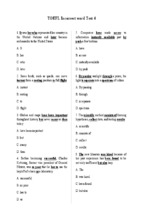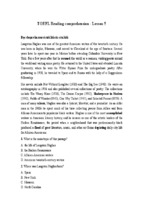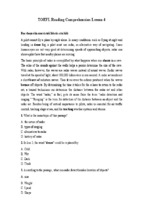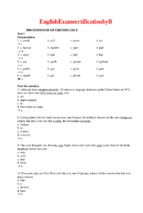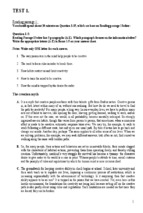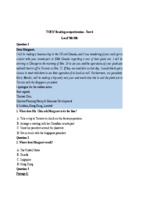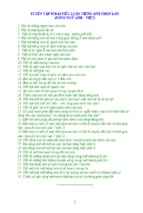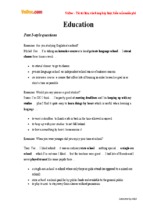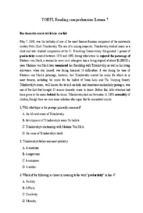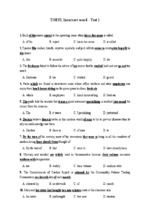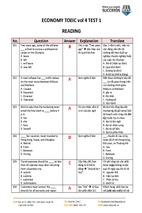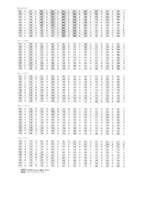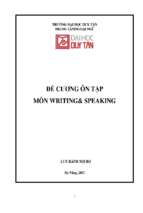Copyright © 2009 by Tim Collins. All rights reserved. Except as permitted under the United
States Copyright Act of 1976, no part of this publication may be reproduced or distributed in any
form or by any means, or stored in a database or retrieval system, without the prior written
permission of the publisher.
ISBN: 978-0-07-183066-9
MHID: 0-07-183066-9
The material in this eBook also appears in the print version of this title: ISBN: 978-0-07147050-6, MHID: 0-07-147050-6.
All trademarks are trademarks of their respective owners. Rather than put a trademark symbol
after every occurrence of a trademarked name, we use names in an editorial fashion only, and to
the benefit of the trademark owner, with no intention of infringement of the trademark. Where such
designations appear in this book, they have been printed with initial caps.
McGraw-Hill eBooks are available at special quantity discounts to use as premiums and sales
promotions, or for use in corporate training programs. To contact a representative please e-mail
us at
[email protected].
TERMS OF USE
This is a copyrighted work and The McGraw-Hill Companies, Inc. (“McGraw-Hill”) and its
licensors reserve all rights in and to the work. Use of this work is subject to these terms. Except
as permitted under the Copyright Act of 1976 and the right to store and retrieve one copy of the
work, you may not decompile, disassemble, reverse engineer, reproduce, modify, create
derivative works based upon, transmit, distribute, disseminate, sell, publish or sublicense the
work or any part of it without McGraw-Hill’s prior consent. You may use the work for your own
noncommercial and personal use; any other use of the work is strictly prohibited. Your right to use
the work may be terminated if you fail to comply with these terms.
THE WORK IS PROVIDED “AS IS.” McGraw-Hill AND ITS LICENSORS MAKE NO
GUARANTEES OR WARRANTIES AS TO THE ACCURACY, ADEQUACY OR
COMPLETENESS OF OR RESULTS TO BE OBTAINED FROM USING THE WORK,
INCLUDING ANY INFORMATION THAT CAN BE ACCESSED THROUGH THE WORK VIA
HYPERLINK OR OTHERWISE, AND EXPRESSLY DISCLAIM ANY WARRANTY, EXPRESS
OR IMPLIED, INCLUDING BUT NOT LIMITED TO IMPLIED WARRANTIES OF
MERCHANTABILITY OR FITNESS FOR A PARTICULAR PURPOSE. McGraw-Hill and its
licensors do not warrant or guarantee that the functions contained in the work will meet your
requirements or that its operation will be uninterrupted or error free. Neither McGraw-Hill nor
its licensors shall be liable to you or anyone else for any inaccuracy, error or omission,
regardless of cause, in the work or for any damages resulting therefrom. McGraw-Hill has no
responsibility for the content of any information accessed through the work. Under no
circumstances shall McGraw-Hill and/or its licensors be liable for any indirect, incidental,
special, punitive, consequential or similar damages that result from the use of or inability to use
the work, even if any of them has been advised of the possibility of such damages. This limitation
of liability shall apply to any claim or cause whatsoever whether such claim or cause arises in
contract, tort or otherwise.
CONTENTS
Introduction
Acknowledgments
Pronunciation and Spelling
Pronunciation
Spelling
Capitalization
Punctuation
Grammar
Nouns
Numbers
Determiners
Pronouns
Adjectives
Possessive Words
Verbs
Be: Simple Present Tense
Simple Present Tense
Present Progressive Tense
Imperatives
Be: Simple Past Tense
Simple Past Tense
Past Progressive Tense
Present Perfect Tense
Future Tense with Going to and Will
Modal Verbs
Subject-Verb Agreement
Passive Voice
Two-Word Verbs
Reflexive and Reciprocal Verbs
Infinitives, Gerunds, and Participles
Adverbs
Prepositions
Conditional Sentences
Impersonal Expressions
Vocabulary
Catch the Errors
Irregular Verb List
Answer Key
Index of Words and Expressions
Subject Index
INTRODUCTION
The purpose of this book is to identify the most common trouble spots for English language
learners, to provide a basis for understanding why these trouble spots cause difficulties, and to
offer guidance and practice for avoiding potential errors.
Many errors commonly made by speakers and learners of a second language are caused by
transferring patterns and features of the native language to the new language. This happens in all
aspects of language from pronunciation to word formation to sentence structure:
Difficulty saying an English sound arises because the first language does not have such a sound.
Double letters are omitted from English words because the first language’s spelling system
does not have double letters.
Verb endings to show tense or noun endings to show plurals are omitted because the first
language does not add such suffixes to these words.
Adjectives are placed after, rather than before, nouns because the first language follows that
pattern.
“Taller from” is said instead of “taller than” because that’s the pattern in the first language.
Another source of error is the learning process itself. That is, learners tend to overapply or
misapply patterns and rules in the new language, do not learn exceptions to the rules, or do not
apply the rules fully. Here are examples of these kinds of errors:
Applying the regular -ed past-tense ending to irregular verbs: Igoed home early yesterday.
Using more with the adjective heavy (which requires the -er ending) because the rule that twosyllable adjectives ending in -y use -er, not more, was not fully learned.
Using asleep in front of a noun because the rule that a certain small group of adjectives,
including asleep, are used only after a linking verb was not fully learned.
In this book, you will find help with these and many more common errors through explanation and
example. You will become aware of potential trouble spots and learn how to break the habits,
learn the necessary rules, and correct your mistakes. Several examples are given for each topic,
followed by exercises that test your understanding and help you avoid the pitfalls.
Because individual words of a language are used in connection with other words, you will find
that many topics are mentioned in more than one place. Extensive cross-referencing will help you
find connections between related topics. Topics and lists are presented in logical order. For
example, irregular verbs are presented in groups of verbs that follow similar patterns.
Comparative and superlative forms of adjectives are presented in logical groupings according to
how they are formed and spelled. Verb tenses are presented in order from the present tense to
modal verbs. Complex syntactic patterns, such as the passive voice, are presented at the end of
the volume, after all the prerequisite knowledge has been presented. In addition, the back of the
book includes a comprehensive and detailed index, which serves as a guide to locating all the
references to each topic, as well as a key with the answers to all the exercises. I hope that the
materials presented in this book will help you improve your proficiency in English and avoid the
most common and vexing errors in English.
Suggestions for Using this Book
This book is divided into two parts: Pronunciation and Spelling and Grammar. The largest
section is Grammar, which identifies the various parts of speech in traditional terminology for
ease of comprehension. Each term is explained and illustrated with multiple examples, providing
necessary review or clarification.
There are many ways to use this book:
Examine the “Avoid the Error” headings in each section. Read the examples and then the
related explanations.
Use the index to find specific topics, as you need them.
Use the table of contents to find the specific chapters you want to study.
Work through the book in sequence from beginning to end for a complete overview or review
of English grammar and the most common and vexing errors that learners make.
Complete the exercises on your own paper, and use the Answer Key to check your work. Then
review any areas where you need extra review or explanation, and complete the exercises again.
Use the “Catch the Errors” section at the end of the book to check your understanding of the
major topics in the book.
Throughout this book, all errors are presented in red type and marked by an . For maximum
clarity, all errors are corrected, and each corrected version is presented with a .
The guidelines here are based on current standard usage in North America. However, usage
varies according to region and other variables, and language is constantly changing. In cases
where variants exist for formal and informal situations, details are provided. The biggest error of
all would be to correct a native speaker, or to imply in any way that he or she does not speak
correct English. The best way to improve your English is to listen to native speakers and interact
with them.
ACKNOWLEDGMENTS
I am indebted to Grace Freedson, who presented me with the opportunity to write this book; to
Garret Lemoi, who gave patient guidance and feedback throughout the writing; to Julia Anderson
Bauer, who skillfully put the book through the publishing process; to Robert F. Wilson, whose
networking skills have been instrumental in my career; and to Mary Jane Maples, who has
provided me with peerless advice and countless opportunities throughout my career.
This book is dedicated to all my teachers of linguistics:
Cynthia Cornell, DePauw University
Ernesto Carratalá, Universitat Central de Barcelona
Roser Estapá Argemí, Universitat Central de Barcelona
José Enrique Gargallo Gil, Universitat Central de Barcelona
Joan Veny, Universitat Central de Barcelona
Lyle Bachman, University of California at Los Angeles
Mario Saltarelli, University of Southern California
H. Douglas Brown, San Francisco State University
Lawrence F. Bouton, University of Illinois at Urbana
Ron Cowan, University of Illinois at Urbana
Wayne B. Dickerson, University of Illinois at Urbana
Pearl Goodman, University of Illinois at Urbana
Hans Hock, University of Illinois at Urbana
Yamuna Kachru, University of Illinois at Urbana
James F. Lee, Indiana University
Bill VanPatten, University of Illinois at Chicago
Carol Klee, University of Minnesota
John Bordie, University of Texas at Austin
Jabier Elorrieta, University of Texas at Austin
Elaine Horwitz, University of Texas at Austin
Zena Moore, University of Texas at Austin
Dieter Wanner, The Ohio State University
PRONUNCIATION AND SPELLING
PRONUNCIATION
English Sounds
The English language has about forty sounds, twenty-four consonants, and sixteen vowels.
Knowing these sounds can help you improve your pronunciation. Special phonetic symbols are
used to represent sounds. Key places in this book use phonetic symbols to clarify pronunciation.
They are written between slash marks, such as /b/, to indicate that they are symbols. You do not
need to memorize these symbols to learn English—just use them as references. Many learners’
dictionaries use these symbols, so being familiar with them will help you when you look up
words. Each of these sounds can be spelled in many ways. For information on spelling, see page
9.
Consonants
This table shows the consonant sounds of English:
VOICELESS
VOICED
Voiced and Voiceless Sounds
Consonants fall into two groups, voiced and voiceless. When you say a voiced sound, your vocal
chords vibrate. When you say a voiceless sound, your vocal chords do not vibrate. To feel your
vocal chords vibrate, place your hand on your throat and say word pairs such as fan/van,
pill/bill, or Sue/zoo. Your vocal chords should not vibrate when you say the first consonant in
each pair.
Many learners have difficulty with the sounds /θ/ and /ð/. The sound /θ/ is not voiced (i.e., it is
voiceless), which means the vocal chords do not vibrate when you say it. The sound /ð/ is voiced.
The chords should vibrate when you say this consonant.
AVOID THE
To pronounce /θ/ and /ð/, your tongue must be between the upper and lower teeth. Instead,
people may make the mistake of saying /d/ or another sound.
The sounds /θ/ and /ð/ may be difficult for individuals from a culture where it is not polite to
show your tongue. Keep in mind that when speaking English, showing one’s tongue to
pronounce these sounds is perfectly normal. Nevertheless, if you are shy, you might cover your
mouth when you say these sounds, until you become comfortable saying them.
To learn /r/, listen to native speakers and practice saying words with many /r/ sounds, such as
refrigerator. Saying tongue twisters is also a good way to practice this sound.
Around the rough rocks the angry rascal ran.
AVOID THE
The sounds /l/ and /r/ are often difficult for speakers of Chinese, Japanese, Korean, and other
Asian languages. In fact, their listeners can become confused by the wrong sound:
Word pairs that can be confused in this way include: right/light, lock/rock, grass/glass,
lamp/ramp, raw/law, row/low.
The sound /l/ is produced by the tip of the tongue touching the roof of the mouth. The sound /r/
involves no contact between the tongue and the roof of the mouth.
The spelling of words in English is a reliable clue for when to pronounce each sound. The
letter l is always pronounced /l/, and the letter r is always pronounced /r/. However, some
words have a silent l: would, could, should, half, chalk, talk, walk, Lincoln, almond, and
salmon.
Vowels
This table shows the vowel sounds of English:
The /εr/ sound is particularly hard to say. To learn it, practice saying words with vowel + r
combinations.
Stress
Stress is the loudness with which we say a word or syllable. (A syllable is a part of a word that
consists of at least one vowel and can have one or more consonants. A word can consist of one or
more syllables.) A word can have one or more stressed syllables. A one- or two-syllable word
can have one stressed syllable.
A word of two or more syllables can have primary stress and secondary stress. Primary stress is
marked with ', secondary stress with '.
Some words, such as articles and one-syllable prepositions, are not stressed at all.
In English, unstressed vowels usually become / /.
AVOID THE
Sometimes the meaning of a word depends on which syllable is stressed.
In suspect/suspect and many other pairs of words, the first syllable is stressed if the word is a
noun, but the second syllable is stressed if the word is a verb.
Contrastive Stress
In English, we can stress any word, even one that normally is not stressed, to express a special
meaning. Look at how the meaning of this sentence changes depending on the stress:
We will finish work at 1:00. (Others will finish at another time.)
We will finish work at 1:00. (We won’t finish at another time.)
We will finish work at 1:00. (We won’t start or do something else at that time.)
We will finish work at 1:00. (We won’t work after that time.)
We will finish work at 1:00. (We will finish at exactly that time.)
We will finish work at 1:00. (We will not finish at 2:00.)
Listen carefully when English speakers give special stress to a certain word. It means that the
person is using contrastive stress.
Rising Intonation for Questions
Intonation is the pitch, higher or lower, of sound. English uses rising intonation for yes/no
questions. With rising intonation, the pitch goes up at the end of the sentence. The rising intonation
signals that the person is asking a question.
Are you finished using the computer?
AVOID THE
Do not use rising intonation with wh- questions. Use falling intonation.
In wh- questions, the question word signals that the person is asking a question. Rising
intonation is not necessary with wh-questions.
SPELLING
English spelling often seems difficult, but many common spelling patterns can help us spell better.
Vowels
Short Vowels
Spell short vowels /I, ε, æ, , υ,/ with only one letter.
Long Vowels
To spell long vowels /i, e, o, u/, use two letters.
Usually, the second vowel is silent. To remember this rule, children use a simple rhyme. You can
use it, too: “When two vowels go walking, the first one does the talking.”
A vowel that comes at the end of a word or syllable also is long.
i Before e
When the letters i and e are together, they are usually spelled ie.
There are some exceptions to this rule:
After c, e usually comes before i.
When the combination sounds like /a/, e comes before i.
However, not all words follow this pattern:
A children’s rhyme makes this rule memorable: “I before e, except after c or when sounded as /a/,
as in neighbor and weigh.”
Consonants
The sound /f/ can be spelled with/, ph-, -ough, or -augh.
There are some exceptions to these rules. The letter group -ough also represents /o/.
The letter group -augh represents the sounds / /.
AVOID THE
The initial /f/ sound in Philippines (an island nation in Asia) is spelled Ph-, but Filipino (an
individual from that country) is spelled with F.
The sound /k/ can be spelled c, cc, k, or ck.
The letter q is always followed by u.
The /s/ sound can be spelled with c or s. Usually c+ i or e is pronounced /s/. Otherwise, c is
usually pronounced /k/.
The
sound can be spelled with g or / Usually, g+ i or e is pronounced
usually pronounced /g/.
. Otherwise, g is
AVOID THE
Don’t forget the double consonant letters in English words.
Silent Letters.
Many words have silent letters.
The k is silent in the initial kn-.
The letters gh are silent in the final -ght.
The letter b is silent before t in words such as:
The letters h and w are silent in these combinations: rh- and wr-
An initial h is silent in many words.
The letter / is silent in these words:
Many words end with a silent final -e.
AVOID THE
Take care not to forget a final silent -e.
Adding Prefixes
A prefix is a word part added to the beginning of a word to change its meaning. Common prefixes
include mis-, over-, pre-, and re-. Adding a prefix to a word does not change the spelling of the
word.
AVOID THE
If the last letter of a prefix and the first letter of a word are the same, the letter will appear
double when the prefix and word are combined. Do not forget the double letter.
Adding Suffixes
Suffixes are word parts that are added to the ends of words. Common suffixes include -ed, -ing, er, est, -s, -ful, -ly, and so on. Adding suffixes to words involves many spelling changes. Here are
some simple rules.
When adding a suffix that ends in a vowel to a one-syllable word that ends in a vowel and a
single consonant (hot), double the final consonant: hotter.
This is often called the 1 + 1 + 1 rule. If a word has a one-syllable word, one short vowel, and
one consonant at the end, then double the consonant when adding a suffix.
If a word has more than one syllable, double the final consonant only if the final syllable is
stressed.
When adding a suffix to a word that ends in consonant + -y, change the final -y to -i.
When adding a suffix to a word that ends in a vowel + -y, do not change the final -y to -i.
When adding a suffix to a word that ends in a vowel, drop the final vowel if the suffix begins with
a vowel.
AVOID THE
Do not drop the final -e when it comes before c or g and the suffix begins in a, o, or u.
When adding -able to like or love, dropping the -e is optional:
When adding a suffix to a word that ends in a vowel, keep the final vowel if the suffix begins with
a consonant.
For details on adding
-s to nouns, see page 47.
-s to verbs, see page 131.
-ing to verbs, see page 138.

